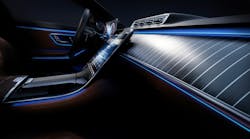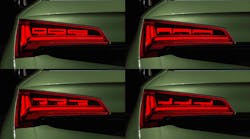Two OLED-centric projects proposed as part of the FY14 SBIR-STTR grant cycle concluded in November 2014 have been funded for April 2015 start dates and will run two years.
The new grants, proposals for which were submitted in the FY2014 (fiscal year 2014) Phase I Release 1 SBIR-STTR grant cycle, are being funded in the FY15 Phase II Release 1 budget and will begin a two-year run in April. Earlier this year, the DOE had awarded funding for LED and OLED research in the FY15 Phase I Release 1 budget.
MicroContinuum's project is entitled "R2R production of low-cost integrated OLED substrate with improved transparent conductor & enhanced light outcoupling." Roll-to-roll manufacturing is seen by many as the key to lower OLED manufacturing cost and wider adoption in large-screen-display and general-lighting applications.
The MicroContinuum project is focused specifically on OLED panels for the general lighting application. The project will pursue the integration of nanoscale features in the OLED stack during roll-to-roll processing with the optical features enabling higher output and the process development delivering lower cost.
Pixelligent Technologies project is entitled "Advanced light extraction material for OLED lighting." Pixelligent will work with OLEDWorks on the project and OLEDWorks won a separate OLED grant in the awards presented earlier this year (linked above).
The Pixelligent project hopes to demonstrate a nanocomposite formulation with a high refractive index that can be applied in typical manufacturing processes to improve light extraction. The company hopes to show that the technology is sufficiently cost effective that it can help catalyze the commercialization of white OLED lighting.
While some in the solid-state lighting (SSL) industry doubt that OLEDs will ever approach LED technology in terms of efficacy or cost, the DOE continues to invest in the technology. For example, four OLED projects won funding in FY13. Moreover, several projects funded in FY14 were OLED related. Without question, OLEDs prove very compelling in some applications and costs are dropping, although not at the same pace of LED technology. See our most recent feature article on OLEDs for more details.







